3 Techniques To Climb Your Way To the Top of LinkedIn Keyword Searches

When I told my labmates I was working on my LinkedIn profile, they said what for?
In their eyes LinkedIn was not for academics. Obviously, since I was getting a PhD in academia, there was no place for me in industry, I had to stay in academia.
And so, I stopped asking them to connect. I stopped asking other academics within my university to connect too, and soon I stopped asking everyone to connect.
My LinkedIn profile laid dormant for several years while I went through grad school.
As I neared the end of my PhD, I realized I wasn’t an academic. No matter how hard I tried to fit into that scene, it never seemed right. I didn’t enjoy writing grants, or doing bench work. The atmosphere was crushing, debilitating, and toxic.
I did not have a clear path, I didn’t even know how many paths there were! All I knew was the straight and narrow academic path which was wrong for me.
I did know that LinkedIn was vitally important for a successful transition out of academia and into industry.
I went back to my LinkedIn profile and was a little appalled at my juvenile attempt of making a profile nearly 7 years prior. My profile was in desperate need for an update.
But just like in my academic career, I knew the trends within LinkedIn had changed. My purpose for being on LinkedIn had changed. It was no longer trying to connect with people who could help me some years from now.
I needed help now! I needed to get noticed by employers and recruiters, to rank high in searches, to be visible.
So I did some research and found out about ATS, applicant tracking software. I dug deeper and found out how these types of software are essentially keyword search algorithms like google. I began to dive into job postings and conducted a few informational interviews. From these I was able to piece together the keywords I needed to beat ATS, to get noticed, and eventually to get a job.
I’m so glad that I did.
I made great connections on LinkedIn, was contacted by recruiters, and in the end got a job without having to send my resume to a job hiring site.
How Do Keyword Search Engines Work?
Keyword search engines are used in just about everything these days – from google searching to job hunting. As we use them more and more they are becoming more sophisticated. Unfortunately, this sophistication doesn’t help the job hunter but the ones offering the job.
In the simplest form, here is how it works. Someone makes a search that gets imputed into an algorithm. The algorithm sends out crawlers – also called web bots or spiders – to go search for the best hit.
These crawlers can zero in on certain metadata and keywords.
They crawl between all the information, moving between pages and putting together a picture of different content and keyword groups.
In the end, these little bugs crawl back to the algorithm and all the information is aggregated together. This immense amount of data is then digested quickly and easily into a user friendly interface that is displayed to the person who made the search.
This way, a recruiter or hiring manager can make a search based on specific job postings. There are currently 690 million LinkedIn members across 200 countries.
Keyword searches allow recruiters and hiring managers to rank all these members in order to get the candidates that best match their search.
Instead of mulling through resumes or endless LinkedIn profiles, the algorithm presents them with a ranked report. The recruiter or hiring manager can quickly find the top 5-10 candidates and ask them for an interview.
While the average resume gets less than 10 seconds of a recruiter/hiring manager’s time, these keyword searches can disqualify a candidate in less then a 1 second.
So, how you rank in keyword searches might be the difference between getting a job and being invisible.
The Three Levels Of Keyword Searches
When it comes to keywords and search engines there are many layers. The more layers you apply, the deeper and more complex your LinkedIn profile will become.
However, if you know what job you want, optimizing your LinkedIn profile is the key to cracking the code on keyword searches and climbing your way up to rank high enough to get your resume in the hands of a recruiter/hiring manager.
Beginner Level: Make A Word Cloud
The first level is the most basic but don’t confuse that with importance. It’s the easiest way to increase your rankings.
The number one thing you should do to increase your LinkedIn rankings is to make a mind map.
This is not a normal mind map, it’s a specific and highly curated map depicting the keywords for the job of interst.
Here’s what you need to do: First, what position do you want? Seems like a simple question but it’s actually quite hard. PhDs are bombarded with academic rhetoric leaving very little room to explore what’s actually out there.
So, spend some time exploring your LinkedIn connections, your contacts, job postings, and reading the descriptions. What kind of roles stand out to you?
Once you found a position you like or maybe a couple similar positions that stand out to you, go find some job postings and start highlighting key words. These are the keywords you want to litter your LinkedIN profile with.
To get a good idea of keywords that work for that position you should analyze about 10-15 job postings.
This is where the mind map comes in. How do the different keywords relate? Can you combine them into keyword groups? Which nouns or verbs occur more than once.
Just like the algorithm, you should rank them. The more they occur in the job posting the more important they are and the more they should appear in your profile.
So get your highlighter ready!
If that seems like a lot of work here’s a pro tip: make a word cloud.
There are tons of word cloud generator websites out there. Find your 10-15 job postings and input them into one of these word cloud websites. Word cloud is an excellent way to visualize a lot of text. Words that are repeated throughout the job post appear bigger.
The top 10-15 words in your word cloud are the keywords you should to put in your profile.

Enhanced Level: Balance Your Central And Distal Keywords
Central keywords are the biggest words in your word cloud or the most connected words in your map. The other words are your distal words. These words are important but not as much as the central words.
How many keywords should you have? Balancing anything is very challenging, which is why this is an enhanced level of LinkedIn keyword mastery.
Balancing anything requires a mastery level of at least two different things. Take work-life balance as an example. To get a perfect work-life balance you have to both be the master of work and life and that takes a great understanding of what you personally need, what your job needs and what your employer needs.
It’s tricky but extremely important and requires a little bit of experimenting.
So, what’s the ideal balance between central and distal keywords?
60-70% of your LinkedIn profile should be your central keywords with the remainder being your distal keywords.
It’s not just 5-6 keywords sprinkled in the heading of your LinkedIn profile. The profile should be inundated with central keywords.
This doesn’t include articles, or filler words. It refers to the content, the meaningful words. However, you still need to make sure your profile is grammatically correct. The keywords need to be placed in well developed sentences. It needs to make sense. You don’t want to just list the keyword without context. This can actually have the opposite effect.
Instead of bumping you up in the ranking, keyword loading can completely remove your profile from the search.
The algorithms are sophisticated, and are getting better every day. The algorithms know if you are keyword loading and disqualify your resume.
Bottom line: 60-70% of your profile should be made up of your central keywords. The remainder should be made of your distal keywords, but everything should be in the context of your life and work experience.
Ultimate Level: Keyword Variation
All words are not created equal and it’s important to understand the different connotations of a word. Take “team player” as an example. Team player may sound like a positive word but in actuality it is not, it’s weak, overused, and may not convey what you think it does.
“Team player” sounds like you show up but you don’t perform. A better word might be “results-driven collaborator”. Collaboration has a stronger connection to involvement.
It conveys that not only you are able to work with others, but you actively seek it out and you are involved throughout the process until results are achieved. This if backed by data, adding “team player” to your resume can decrease your chances of getting hired by 51%.
Word connotation and length matters.
There are some other word variations to worry about as well. Do you use the singular or plural case of the word? Do you use a single word or keyword grouping? How many words are too many in a keyword group?
You want to use keyword or keyword groups that have mid range competition and high traffic.

To know which keyword variations are best, you need to do a short analysis. Google trends and SEMrush are some websites that help to pick the best keyword or keyword groupings.
In general, you want to use keywords or keyword groupings that aren’t too short or too long.
Shorter keywords tend to have high volume and high competition but low focus.
Take a microbiologist as an example. Microbiology is easy enough for just about anyone to understand. Many people use it in everyday life making it have high competition and volume but no specificity.
On the other hand “Medical Microbiologist” or “Clinical Microbiologist” is a little longer. This phrasing will have lower volume and lower competition. However, it is more focused, meaning that you’ll rank higher among employers looking for a specific kind of microbiologist.
Concluding Remarks
So there it is the three levels to cracking the code on LinkedIn keyword searches. These are not simple fixes, they will take time, determination and a little bit of research.
As a PhD, this should not be a problem. Take the time to update your LinkedIn profile, you might be surprised about who starts looking at your profile.
If you’re ready to start your transition into industry, you can apply to book a free Transition Call with our founder Isaiah Hankel, PhD or one of our Transition Specialists. Apply to book a Transition Call here.

ABOUT ISAIAH HANKEL, PHD
CEO, CHEEKY SCIENTIST & CAREER SUCCESS MENTOR
Dr. Isaiah Hankel is the Founder and CEO of Cheeky Scientist. His articles, podcasts and trainings are consumed annually by millions of PhDs and other professionals in hundreds of different countries. He has helped professionals transition into top companies like Pfizer, Tesla, Amazon, Pearson, Google, Apple, Intel, Dow Chemical, BASF, Merck, Genentech, Home Depot, Nestle, Hilton, SpaceX, Syngenta, the CDC, UN and Ford Foundation.
Dr. Hankel has published 3X bestselling books and his latest book, The Power of a PhD, debuted on the Barnes & Noble bestseller list. His methods for getting PhDs hired have been featured in the Harvard Business Review, Nature, Forbes, The Guardian, Fast Company, Entrepreneur Magazine and Success Magazine.
More Written by Isaiah Hankel, PhD
































